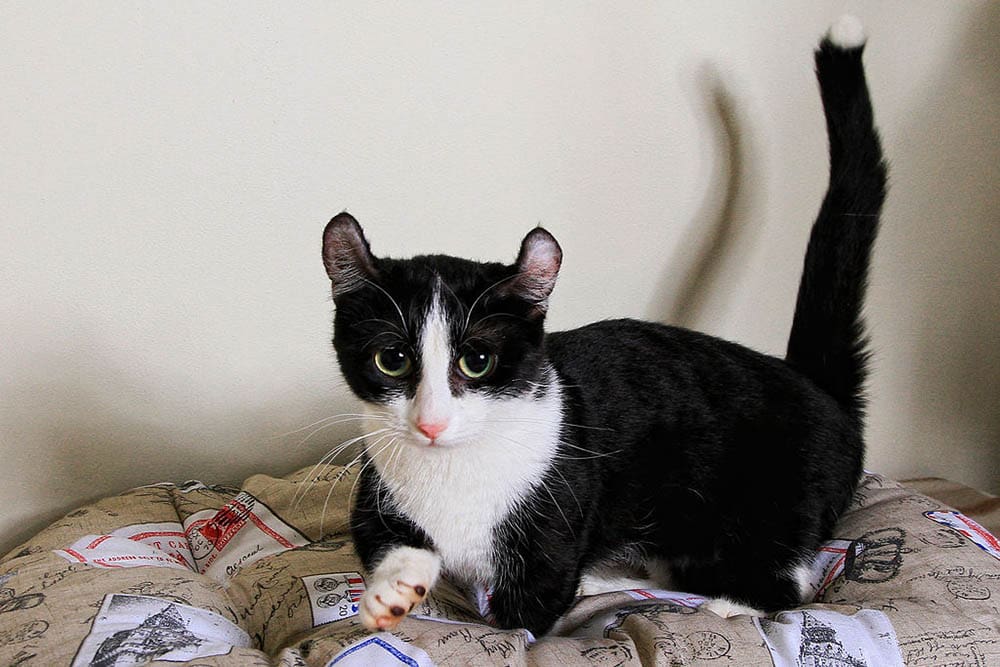Can Cats Eat Fish Bones? Vet-Reviewed Safety Facts

Updated on
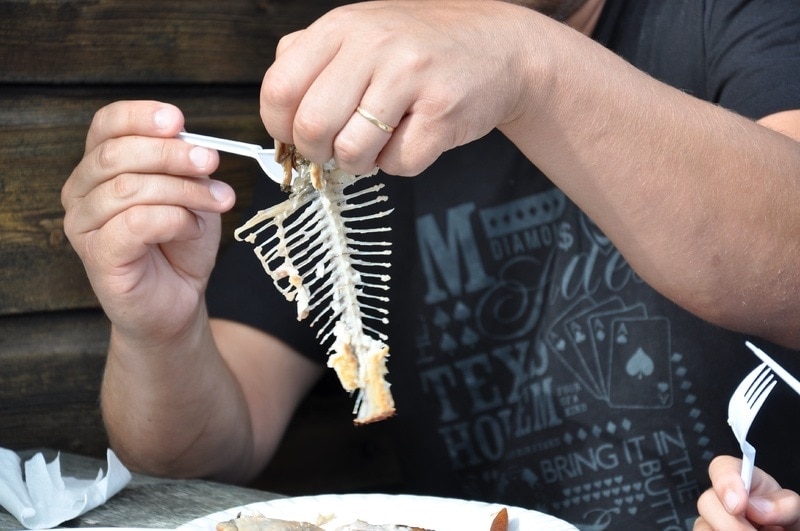
Fish are tasty treats for cats, but it’s important to pick out the bones before feeding them to your cat. Cats shouldn’t eat fish bones, because cooked bones can damage your pet’s gastrointestinal tract, and both cooked and uncooked bones can be choking hazards.
Therefore, it’s essential to carefully remove all bones from fish before feeding them to your cats. It’s best to offer them alternative treats because there are dangerous risks associated with improperly eaten fish bones.
Is It Safe For Cats To Eat Fish Bones?
Although fish bones don’t contain harmful or toxic properties, they’re unsafe for cats. First and foremost, they can be choking hazards. Domesticated cats are usually not used to eating whole fish and may have difficulty chewing on a sharp fish bone and end up swallowing it whole.
Improperly chewed fish bones can easily get stuck in a cat’s throat or mouth, and depending on how sharp they are, they can scratch your cat’s throat or get stuck. Cooked fish bones can also scratch and impact the gastrointestinal tract. Feeding your cat raw fish bones can also be an unsafe practice.
According to the Food and Drug Administration (FDA), raw seafood shouldn’t be left out for more than 2 hours or more than 1 hour in temperatures above 90°F. Raw fish can carry harmful bacteria, such as salmonella if left out at temperatures between 40°F to 140°F.
Domesticated cats, like humans, can get sick from bacterial food poisoning. Therefore, it’s better to play it safe and avoid feeding your cat raw fish and fish bones, especially when tasty alternatives are much safer for them to eat.
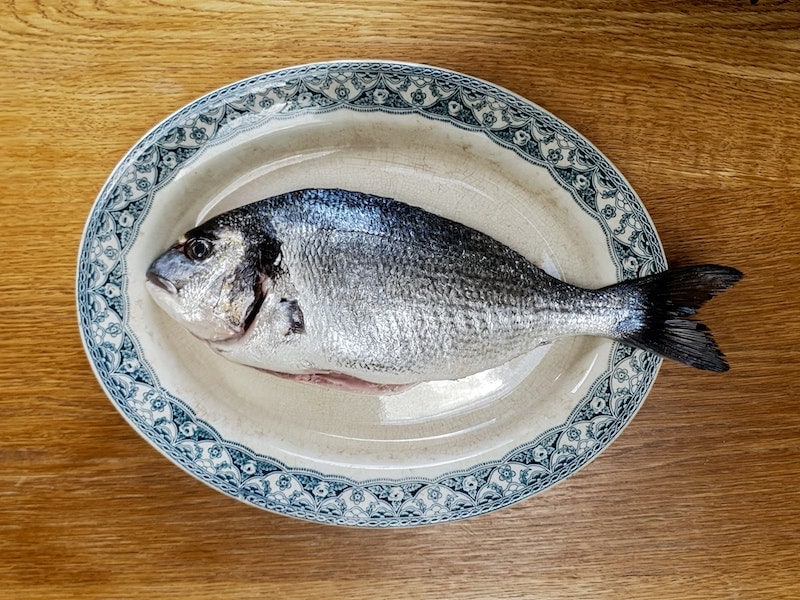
What To Do If Your Cat Ate Fish Bones
If your cat ingests fish bones, monitor their condition for the next few days. Cats may be able to digest and pass fish bones without experiencing any issues. However, they can also end up having gastrointestinal issues, so be on the lookout for any of the following symptoms:
- Vomiting
- Diarrhea
- Lethargy
- Lack of appetite
- Nausea or excessive licking of lips
Blood in your cat’s stool can also indicate damage along your cat’s intestinal lining or a bacterial infection. If your cat’s stool contains red or black blood or mucus, call your veterinarian immediately to schedule an appointment.
The treatment that your veterinarian will prescribe will depend on the severity of your cat’s condition. There’s a good chance you’ll have to feed your cat a bland diet for a few days to give their gastrointestinal tract a rest. Your veterinarian may also prescribe an antibiotic or perform tests to treat diarrhea.
Sometimes, fish bones get stuck in your cat’s mouth or throat and can cause irritation for your cat. If your cat has an obstruction in their throat, they can display these signs:
- Retching
- Gagging
- Loss of energy
- Loss of appetite
- Excessive salivation
- Regurgitation
- Restlessness
- Trouble swallowing
- Trouble breathing
- Persistent gulping
- Pawing at their mouth
If your cat is showing any of these signs, contact your veterinarian. You may have to schedule an appointment so your veterinarian can remove the obstruction.
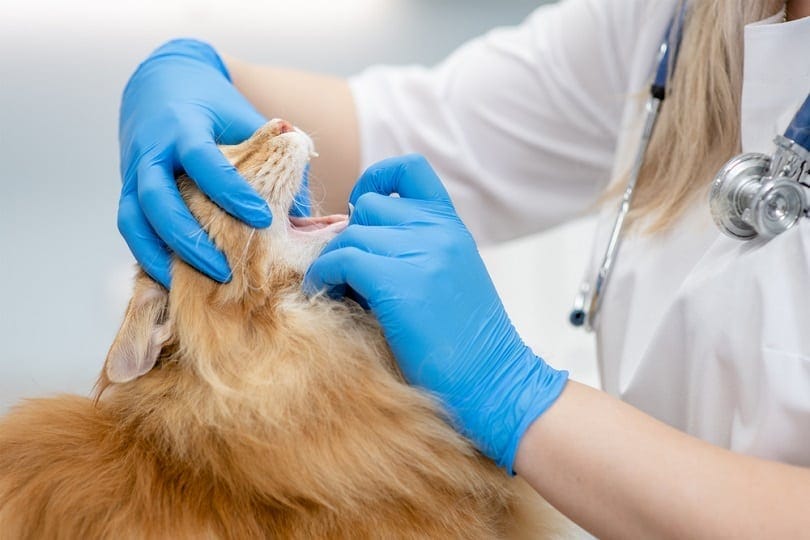
The 4 Safe Alternatives for Fish Bones
Fishbones are risky treats, but fortunately, there are safe alternatives that you can feed your cat. These alternatives reflect the same flavors or textures of fish bones.
1. Freeze-Dried Fish Treats
Freeze-dried fish treats are tasty and nutritious snacks for cats. Some small, freeze-dried fish include bones, but the bones have been freeze-dried and break easily. So, they’re not dangerous to cats.
2. Jerky Treats
Fish bones can be flavorful and fun to chew, but a safer option is to serve jerky treats. They won’t cause damage to your cat’s intestinal lining. Just make sure to serve them in appropriate sizes, especially if you have a cat that likes to eat quickly without chewing.
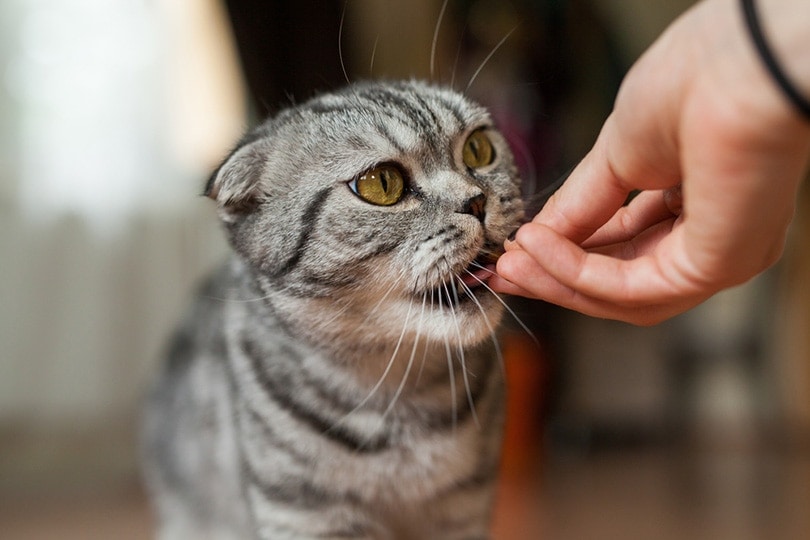
3. Dental Chews
Dental chews approved by the VOHC (Veterinary Oral Health Council) are good for their teeth and satisfying to crunch.
4. Fish Broth
Fish broth is one of the safest ways for your cat to enjoy the flavor of fish. If you’re introducing a new brand to your cat, add the broth in small increments to your cat’s meal to avoid upsetting their stomach. Fish broth can make mealtimes more enjoyable and a great way to add more water to your cat’s diet.
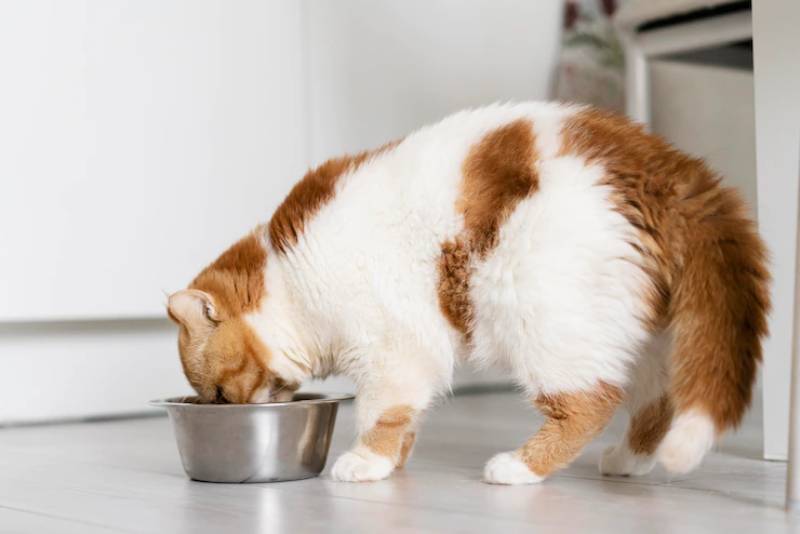
Wrapping Up
Fish bones should be avoided because of the risks they carry, but there are plenty of safer alternatives that your cat can eat. Cat owners might want to feed fish bones as a means of adding variety to their cat’s diet, but we don’t recommend it. Other times, a cat may help themselves to the fish, complete with bones from the kitchen or someone’s plate.
Then, you need to monitor for the signs above, and if you have any concerns, contact your vet sooner rather than later. When making changes to your cat’s diet, do it gradually. Switching up their food too frequently can cause more issues, such as increasing the likelihood of finicky appetites.
So, more than introducing a variety of food into a cat’s diet, it’s more important to find a well-balanced meal for your cat. Many cats fed nutritious diets are content to eat the same food every day.
See also:
- How To Tell if a Cat Is Choking & What To Do (Vet-Approved)
- 6 Best Foods for Siamese Cats – Reviews & Top Picks
Featured Image Credit: PxHere



